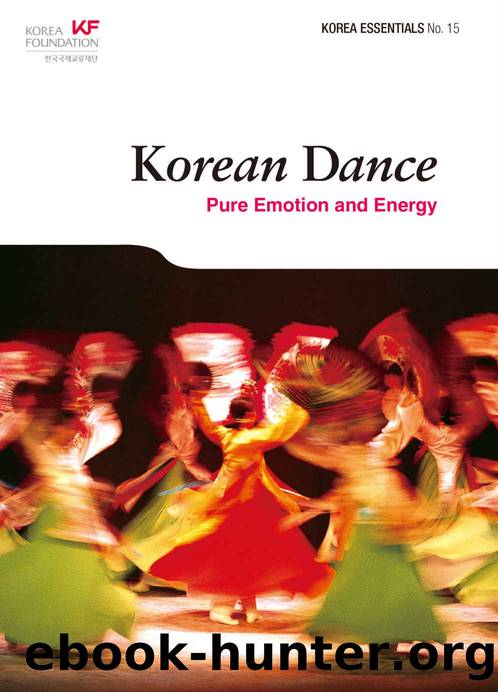Korean Dance: Pure Emotion and Energy (Korea Essentials Book 15) by Curtis File

Author:Curtis File [File, Curtis]
Language: eng
Format: azw3
Publisher: Seoul Selection
Published: 2015-12-06T00:00:00+00:00
THE INCENSE BURNER OF BAEKJE
Baekje incense burner
Given the few surviving relics related to the history of Korean dance, the incense burner of the Baekje kingdom is truly something to be treasured. This artifact has given scholars insight into the perspectives of cosmology, heaven, immortality, life, death, and religion in the Baekje era. The scenes depicted on the burner show a combination of Taoism, Buddhism, and shamanism. Few other artifacts embody such a combination of beliefs. The philosophies of heaven, earth, man, and gods from the northern people are mixed with the earth gods of the south.
On the lid of the burner, the dance of the phoenix is played out, giving insight into the sun worship and bird totemism of the Baekje people. Along with the phoenix dance is a group dance of geese. Each bird represents one of the five principal directions (north, south, east, west, and center) and the prayers offered are for the kingdomâs prosperity and vitality. Also depicted on the burner is a Buddhist mask dance-drama for the redemption of the people.
On one part of the lid is a sculpture of a mountain decorated with carvings of farming dances, showing the importance of agriculture in the lives of the Baekje people. The mountain also features the dance of the birdman, with a human face and bird body, reflecting the desire for honor, wealth, and longevity. Hunting dances and the dance of a half-human, half-animal beast are also featured on the lid and symbolize the bravery and fearsomeness that made up the essence of the northern Baekje people.
The body of the incense burner features the dance of the Vajrapani, the Buddhist protectors of the nation and king, and a dance of a winged-beast from heaven. The stand of the burner represents a dragon dance, depicting the creature with one leg lifted and its mouth open supporting the base of the body, a lotus bloom. The imagery is strong and fitting, showing the guardian deity of the nation supporting the symbols of the core elements of Baekje culture.
Download
This site does not store any files on its server. We only index and link to content provided by other sites. Please contact the content providers to delete copyright contents if any and email us, we'll remove relevant links or contents immediately.
Call Me by Your Name by André Aciman(20427)
Ready Player One by Cline Ernest(14573)
How to Be a Bawse: A Guide to Conquering Life by Lilly Singh(7428)
Wiseguy by Nicholas Pileggi(5706)
The Kite Runner by Khaled Hosseini(5130)
On Writing A Memoir of the Craft by Stephen King(4891)
Audition by Ryu Murakami(4887)
The Crown by Robert Lacey(4760)
Call me by your name by Andre Aciman(4645)
Gerald's Game by Stephen King(4607)
Harry Potter and the Cursed Child: The Journey by Harry Potter Theatrical Productions(4467)
Dialogue by Robert McKee(4353)
The Perils of Being Moderately Famous by Soha Ali Khan(4190)
Dynamic Alignment Through Imagery by Eric Franklin(4171)
Apollo 8 by Jeffrey Kluger(3664)
Seriously... I'm Kidding by Ellen DeGeneres(3602)
The Inner Game of Tennis by W. Timothy Gallwey(3600)
How to be Champion: My Autobiography by Sarah Millican(3569)
Darker by E L James(3492)
